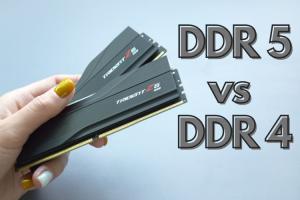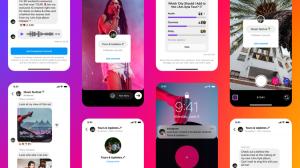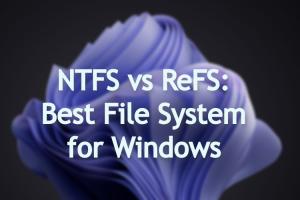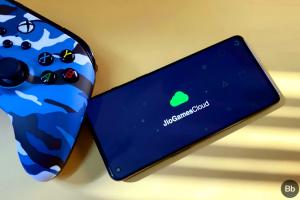Higher Screen Refresh Rate is one of the most sought-after features on smartphones these days. And that’s why we curated a list of 90Hz and 120Hz smartphones that are available right now. However, there is another metric called the Touch Sampling Rate which is somehow overshadowed by the higher Screen Refresh Rate trend. I believe that Touch Sampling Rate is equally important and users should understand its significance if they want the best smartphone experience. So if you are confused about the difference between Screen Refresh Rate and Touch Sampling Rate then follow our explainer below.
Difference Between Screen Refresh Rate and Touch Sampling Rate
-
Screen Refresh Rate
Unlike the touch sampling rate, screen refresh rate is very easy to understand so let me begin with its very definition in layman terms. Every screen – be it on mobile, TV or monitor – refreshes every second to update the current image and create a sense of motion. Standard TVs, monitors, and smartphones refresh the screen 60 times in one second. So you can say that the screen refresh rate is the number at which the display can render maximum frames in one second. Therefore, if the screen refresh rate is higher, more frames will appear in one second which will result in a smooth motion.

So if you translate this basic theory on smartphones, it means that if your smartphone has a higher screen refresh rate, it will have better motion output while scrolling, animations, transition from one app to another and other UI tasks. Eventually, the smartphone will feel fluid and fast without skipping any frames.
-
Touch Sampling Rate
Now we come to Touch Sampling Rate which is entirely different from Screen Refresh Rate. Let me start with a basic definition first. Touch Sampling Rate is the number of times a screen can sense a user touch input in a second. To explain it a bit more, it’s how many times your screen can refresh itself to register a user touch input in a second. It’s intrinsically linked to screen latency and let me explain how.
Take an example of a smartphone that has a 60Hz touch sampling rate. What it means is that it will look for your touch input only 60 times in one second. Mathematically, it roughly translates to a cycle of 16.6ms which means, every 16.6ms your smartphone will look for a touch input from the user. If the smartphone misses to register a touch input in one cycle then it will have to wait for another 16.6ms to register your input. So if the cycle is larger, your smartphone will take a longer time to register your tap, process it and respond accordingly.

However, if you increase the touch sampling rate to 120Hz then it will reduce the cycle to 8.33ms. It eventually means that now the screen will refresh every 8.33ms (in comparison to 16.6ms on a 60Hz touch sampling rate display) to look for touch input from the user. So with the increase of touch sampling rate, you have a far better chance of registering your touch input. Similarly, if you increase the touch sampling rate to 240Hz (like on Asus ROG II) then the cycle will further be reduced to 4.16ms which is amazing. Basically, every 4.16ms, the screen will refresh to look for a touch input and your screen taps will instantly be registered and processed without any delay.
And that’s why we say, if your smartphone has a higher sampling rate then it will respond to user input quickly and without any delay. In contrast, the screen refresh rate brings smoothness in the overall experience during UI navigation; on the other hand, the Touch sampling rate brings a quicker response to your touch input. So to conclude, screen refresh rate and touch sampling rate are two different metrics and have different objectives, but both are equally significant.
The Smoothness War: Android vs iOS
While that was all about the technicality between Screen Refresh Rate and Touch Response Rate, let’s go through some practical examples to understand why iOS generally feels smoother than Android. Here, I am going to talk about the software side of things and how both giants handle touch input.
On Android, when a user touches a UI element like a button or a checkbox, the OS treats this user input as a main process and adds it along with other main Android processes. The touch input by the user is given the same priority as other main processes in the pipeline. So unless the other main processes are not performed, the user input will not be executed which delays the response from the OS side.

However, on iOS, a user touch input is given a separate process unlike Android with real-time priority to execute the user action as quickly as possible. And it makes a world of difference in terms of UI behavior. On top of that, iOS devices have the best GPUs so the hardware further benefits the software to execute the user action instantly. Apart from that, with iPhone X onwards, Apple brought 120Hz touch sampling rate on all its iPhone models including the XR and 11. And that’s why even with a 60Hz screen refresh rate, iPhones feel much more in control and responsive due to the higher touch sampling rate.

Having said that, with the rise of higher screen refresh rate and more so, higher touch sampling rate, Android devices are now giving tough competition to iPhones. The trend first started in gaming phones like Asus ROG II (240Hz) and Black Shark 3 (270Hz) to reduce latency while gaming. However, higher touch sampling rate has made its way to more general consumer devices like Galaxy S20 (240Hz), Mi 10 Pro (180Hz), Realme X50 Pro (180Hz), Realme 6 Pro (120Hz) and more. In the coming days, you would see even more Android devices sporting a higher touch sampling rate.
Pick a Smartphone with Higher Screen Refresh Rate and Touch Sampling Rate
So that was all about our explainer on what is the difference between screen refresh rate and touch sampling rate. As it’s clear, having a higher rate on both the counts will make your smartphone experience much more fluid and responsive. So if you are going to buy a smartphone in the coming months, make sure it has both higher screen refresh rate and touch sampling rate. Anyway, that is all from us. If you found the article informative or if you have some questions for us then comment down below and let us know.


















